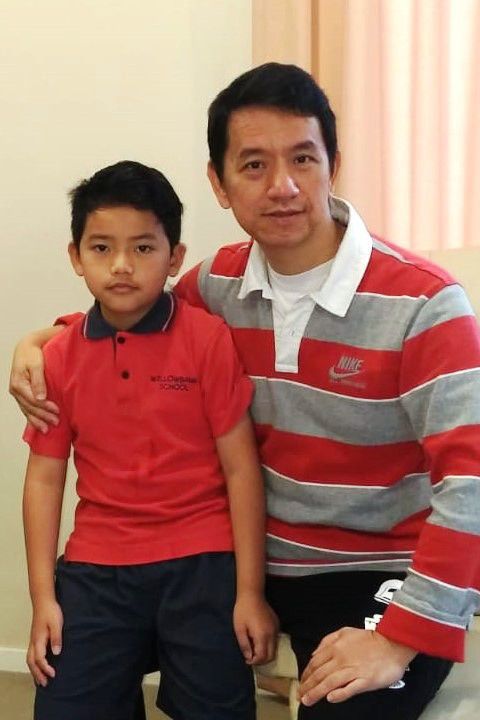Back Home by Chris Hardie
» Download this column as a Word document
» Download photos that accompany this story
» Chris Hardie’s headshot
Thirty days have November,
April, June and September.
Of 28 is but one
And all the remnant 30 and 1.
So what are you going to do with your intercalary day this year?
I’m talking about Feb. 29, which is also known as Leap Day.
Everyone knows it takes the earth 365 days, 5 hours, 48 minutes and 45 seconds to circle once around the sun. And since our calendar has 365 days, we need to account for those additional hours, minutes and seconds. Hence the extra day every four years.
Most of us use the Gregorian Calendar first instituted by Pope Gregory XII in 1582, which replaced the Julian Calendar. It featured Saint of the Month drawings instead of the Sexy Gladiator of the Month sketchings favored by the Romans.

The Gregorian Calendar has 365 days, 12 months of varying lengths, 7-day weeks and aligns with the earth’s revolution around the sun. But it’s far from perfect.
A few weeks ago I wrote about the confusion of calendars and how we really don’t start a new decade until 2021. There’s a better way, says Donny Lai, a college instructor from Hong Kong who read my column and wrote me an email explaining how his proposed NexCalendar works.
Lai — who has a doctorate in business administration — said he started researching calendars after his 8-year-old son in 2018 asked him questions about the calendar.
“He intuitively asked me several questions that I could not answer,” Lai said. “Those questions included why February is particularly short, why August is a long month, why we need to renew the calendar every year, whether the month lengths relate to any astronomical observation. I also found that those simple questions are not explained in any textbook.”
Lai said one of the confusing aspects of the Gregorian calendar is that the days for the dates vary from year-to-year. There are 14 calendar versions and it takes 28 years for a basic calendar cycle and 400 years to complete the full calendar cycle.
It’s particularly frustrating for businesses comparing financial performance to the previous year because you have to factor in the day and date changes.
“Now, I know that the answers will embarrass people that we are using an old and odd calendar that should have been reformed,” said Lai, who is an IT project manager. “We just dogmatically follow and use it without choices and no way to reform it with global agreement. Thus, I had the research and came out with the viable NexCalendar proposal.”
Under the NexCalendar, we would still have 12 months with the same names. The year always begins on Monday, Jan. 1. February always has 29 days, which makes the first quarter consistent with 13 weeks. The year ends on Sunday, Dec. 30.
Dec. 31 is set aside as Leap Sunday when needed, giving everyone two Sundays to end that year. The reason why Leap Day has been at the end of February is because the year used to end that month. So it makes sense to move Leap Day to the end of the calendar year, Lai said.
For those who like long weekends, there’s a big plus to NexCalendar. Every year there will be two Saturdays at the end of August — Saturday, Aug. 31 and Saturday, Sept. 1. Combine that with traditional Labor Day holiday and presto — a four-day weekend. Add a Free Beer Friday day on that weekend and you’ve got my support.
All 13-week quarters would start on a Monday and end on a Sunday, which will make tracking financial performance easier.
“The NexCalendar proposal can simplify many activities, such as fixing the floating holidays, school terms and breaks, annual events and conferences,” Lai said. “It is the design principle of NexCalendar to fix the calendar deficiencies with the ‘least subtle change,’ so that the transition can be seamless and the transition cost can be the minimum.”
Lai, whose family is from New Zealand, said he received encouragement to pursue the idea while teaching a course in iPhone app development at the City University of Hong Kong last year. He had students make apps for NexCalendar and some 30 prototypes were made by more than 120 students.
“They gave me valuable responses and confidence that NexCalendar is the most viable solution that will easily be accepted by people,” Lai said. “They said NexCalendar should be the calendar in use from this century.”
Lai’s launched a website, and he is working on software codes to better illustrate the concept. But he knows it will be a battle to get the world to change.
“Remarkably, while I ask people if they will accept the NexCalendar proposal, they said it is mission impossible,” Lai said. But would they accept it if their country did? “They answered that they certainly will support it as NexCalendar is a much simpler, practical and convenient calendar system for them.”
A smooth calendar transition window is coming up. Lai said it would be more seamless to convert during Gregorian Calendar years that begin on Monday, such as 2024 and 2029.
But history is against Lai. A previous attempt to create The World Calendar, which would also contain equal quarters of 91 days each that started in the 1930s, was rejected. Some religious leaders wanted to keep the seven-day week concept as that calendar would also add an eight-day week once a year.
Even if the days and dates never change, I’m sure people would still buy new wall calendars. We must find somewhere to publish all of those cute kitten photos.
Chris Hardie spent more than 30 years as a reporter, editor



